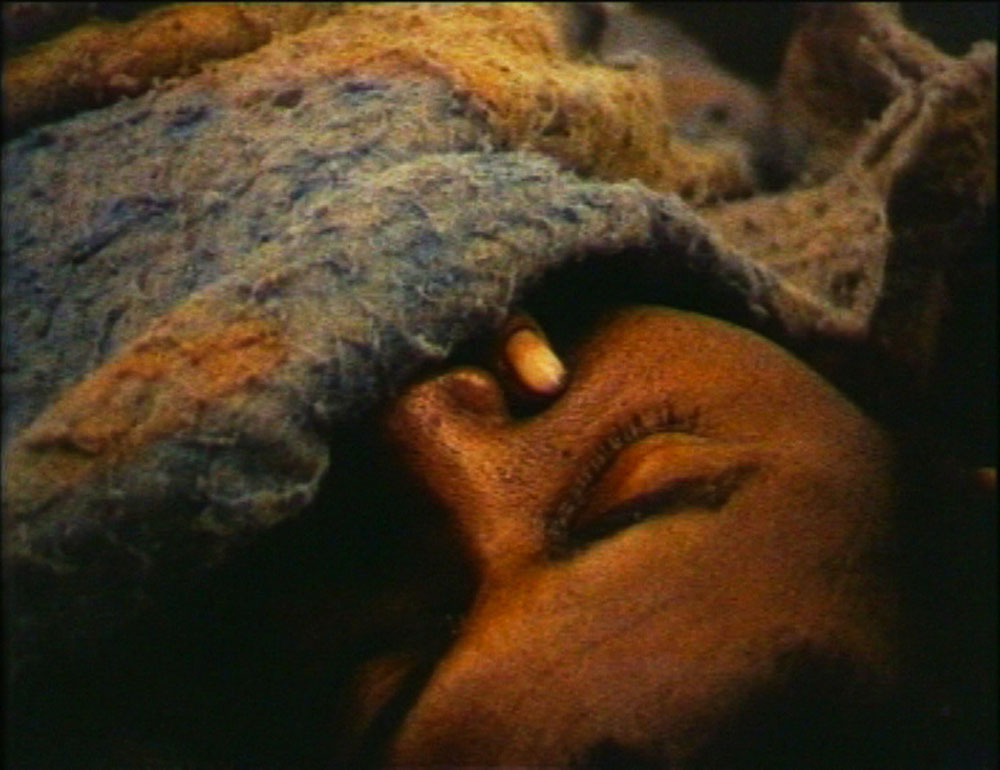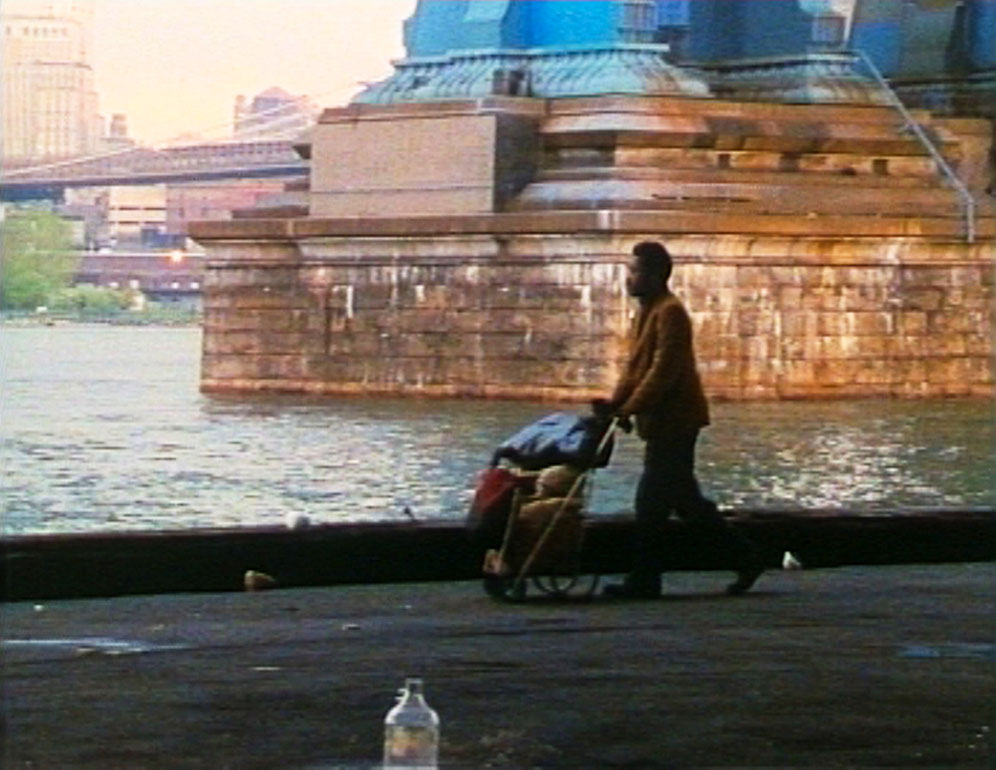Homeless New York 1990
Homeless New York 1990 is a digitalized recut of two associated 16mm films, Black and White, that were made in 1990.
Homeless thematizes the poverty that had become visible in American cities — New York in particular — in the 1980s, which affected primarily African-Americans. The dismantling of the social safety net according to the dictates of neoliberalism resulted in dangerous levels of homelessness, drug dealing and crime, and required answers other than exclusion on the basis of fear and looking the other away out of a feeling of powerlessness.
The 2013 recut of Black and White points to the issue´s continuing urgency: Because former “problem areas” such as Harlem now shine in the supposed gleam of gentrification, what´s required is “discussion of the situation to end exclusion of the poor, which reduces them to non-existence in the public mind.” (Hans Scheugl).
At the same time, Homeless — just like the original material — is also a metafilm that comments on the making of documentaries, and Scheugl´s background as a formal filmmaker plays a significant role. In an extremely long tracking shot around Tompkins Square Park, for example, where the homeless gather and spend a great deal of time, the focus is not individuals and who’s standing in the soup line makes no difference. The park is dealt with simply as a space. The continuous movement says something about the place´s function, which amounts to more than merely the information that homeless can be found here. The manner in which people move around one another is reflected by the circling, voyeuristic camera. The location is made tangible as a result.
“The stranger´s gaze, which appropriates an image, represents an assault on what is sometimes someone´s last possession” is how the voiceover commentary problematizes the active visual, documentary theft. Film as a controversy.
(production note)
Gertjan Zuilhof: Neues Leben in einer alten Disziplin, in: Skrien, Okt.-Nov. 1993, Amsterdam. (Article)
Homeless New York 1990
Recut der beiden Filme Black / White von 1990 (AT 2013, DCP, 18 min)
Der erste Obdachlose verlangt ein paar Dollar für seinen Auftritt vor der Kamera. Scheugl gibt sie ihm und erzählt davon zu diesen Bildern. Dadurch durchbricht er direkt ein dokumentarisches Tabu. Sein Obdachloser ist ein bezahlter Akteur geworden und Scheugl ein Beobachter, der in die Welt vor der Kamera eingreift.
White ist ein Metafilm, der einen Kommentar liefert über das Machen von Dokumentarfilmen. Scheugls Hintergrund als formaler Filmemacher spielt in White eine Rolle. In einer sehr langen Fahrt um den Tomkins Square Park, wo sich Obdachlose versammeln und aufhalten, geht es nicht um Individuen, und es spielt keine Rolle, wer sich nun eigentlich in der ‚soup line’ anstellt. Der Platz wird nur als Raum behandelt. Die durchgehende Bewegung sagt etwas über die Funktion des Platzes, was mehr ist als die bloße Information, dass sich hier Obdachlose aufhalten. Die Art, wie Menschen sich umeinander bewegen, hat ihre Entsprechung in der kreisenden, voyeuristischen Kamera. Der Ort wird fühlbar gemacht.
Diese nicht-dokumentarische Sichtweise ist auch sehr zutreffend bei einem Gespräch zwischen drei Schwarzen, die nicht, wie man es gewohnt ist, interviewt werden. Scheugl filmt wie zufällig ihr Gespräch, aber es ist auch nicht so, dass die Männer sich der Kamera nicht bewusst wären. Sie reden über das Schlafen in den U-Bahnen und in den ‚shelters’, den Obdachlosenheimen, die wegen der Aggression, die dort herrscht, lebensgefährlich sind. Ihr Körperausdruck sagt mehr als die Geschichten, die sie erzählen. Gerade durch das Vermeiden der Interview-Form entsteht ein Reichtum an sekundärer Information.
Auf der einen Seite kommen einem diese Bilder sehr vertraut vor aus anderen Reportagen: es ist die bekannte Geschichte von der Armut im reichen Amerika. Aber dadurch, dass Scheugl diese Bilder auf eine formale Weise bringt, unterscheidet er sie von dem, was wir gewohnt sind, wird sein Film ausgesprochen persönlich.
Homeless New York 1990
2013
Austria
18 min



